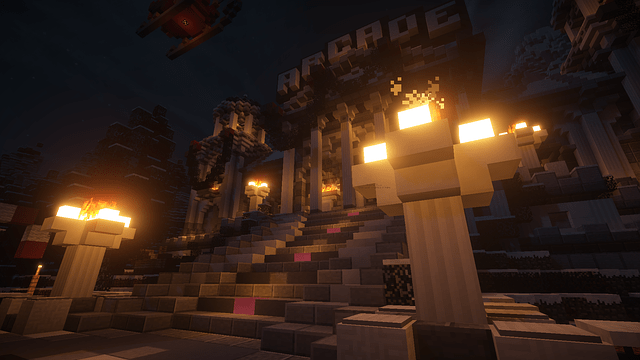While the incredible visual flair and genuinely weird eccentricities of Ghostwire: Tokyo remain a marvel from minute one until you wrap up the story, some gameplay repetitiveness and an abrupt ending make for a game that’s enjoyable but feels like it could have been so much more.
Ghostwire: Tokyo is the story of Akito, one of the few people left in Tokyo after almost all of the other citizens vanish. He’s soon inhabited by KK, a mysterious figure with his own agenda, who also happens to grant Akito special abilities, harnessing various elements to combat the spirits that walk the streets of Tokyo.
At the same time, the pair are hunted by a mysterious group wearing Hannya masks, who appear to have further knowledge about what has happened, and may be the key to fixing what’s gone wrong.
The game starts with an interesting premise, and all of the performances of the Japanese voice actors are great, even if the twists and turns along the way aren’t quite as intriguing as the mystery that is set up.
Notice: To display this embed please allow the use of Functional Cookies in Cookie Preferences.
There’s also a focus on Akito’s goal and specifically who he’s looking to rescue that distracts from the larger questions that the idea of spirits being trapped on earth pose. These are better explored in numerous sidequests and detective files throughout the game, but it’s strange that the main questline is quite generic, when little else about Ghostwire Tokyo is.
The core gameplay brings to mind a first-person shooter mixed with Marvel’s Doctor Strange. Your character’s fingers are whizzing in front of you producing sparks and jets of flame in a way that’s visually dazzling and surprisingly readable. While you start with one simple ability, your arsenal quickly grows, and by the midpoint of the game you’ll be wielding wind, fire and water, however after you gain these abilities, and a bow, it feels like the game’s combat doesn’t progress much further.
While you can upgrade those aforementioned powers and you can use other consumable abilities, you’ll be relying on the three main powers, and while they’re effective, the way in which you take down each enemy doesn’t feel particularly unique on an encounter to encounter basis. Even the more difficult enemies are only harder due to their increased pool of health.
This makes encounters with enemies less about the mechanics and more about hoping the game shows you something new from its monster closet of freakish, frightening and compelling baddies. While there is an early emphasis on stealth and plenty of items and abilities that push the player towards this, there’s very little reason to actually use it.
Once an enemy is weakened, the player is able to grab the core of the creature, which is an instant kill. This mechanic works well once upgraded, but at the start, it doesn’t feel worth it, as it takes some time, and leaves you vulnerable. Sure, you get some ammo for your abilities if you do it, but items that replenish your abilities are so frequent that it doesn’t feel necessary.
Much like the lack of any real danger when it comes to not having enough health, we didn’t really find ourselves switching too frequently between attacks. The game’s boss fights, while visually incredible, fail to deliver in the gameplay department. While there are only a few of them throughout the game’s surprisingly brief runtime, they’re not very mechanically complex.
For a game that’s so unique in its visual language, the mission structure of Ghostwire: Tokyo is surprisingly safe. At multiple points throughout the game, you’ll be tasked with clearing Tori gates, those iconic structures that are throughout Japan. In order to do this, you’ll need to clear the area of enemies, then stand in front of it for a few seconds. It essentially functions like an Assassin’s Creed tower, however instead of revealing some of the map, it allows you to travel to new areas of the city that were previously covered in a deadly fog.
“Despite its problems, it’s hard to discount all the things that Ghostwire: Tokyo does incredibly well. The atmosphere of skulking through the streets is excellent, and the juxtaposition of a realistic feeling city filled with these horrific creatures is a visual style that’s hard to forget.”
This feels like a misstep for multiple reasons. Firstly, while we understand gating the player into certain areas early, as the game progresses, the map gets absolutely littered with Tori gates, and while they’re simple to clear, they’re tedious and thus exploration beyond the areas that the player has already cleared feels like a chore rather than something enticing. Secondly, one of the final objectives in the game is to clear a few areas of this deadly fog, which at the time we perceived as a small break in the action, but in reality, it feels more like padding to lengthen the runtime.
If you’re simply following the game’s main campaign, and not exploring Tokyo at all, which would be a wasted opportunity, you could complete Ghostwire: Tokyo in around six hours. We were genuinely shocked when a “point of no return” warning popped up when we assumed we were still in the first half of the game. There’s plenty of game here if you’re up for completing side quests around Tokyo or collecting the ridiculous number of wandering spirits, but the game’s main campaign feels like it’s only just gaining momentum when it’s time for the credits to roll.
Despite its problems, it’s hard to discount all the things that Ghostwire: Tokyo does incredibly well. The atmosphere of skulking through the streets is excellent, and the juxtaposition of a realistic feeling city filled with these horrific creatures is a visual style that’s hard to forget.
For a game about how everyone on earth has disappeared, the streets of Tokyo are surprisingly full of life. It’s a very geographically realistic depiction of the iconic city, and doesn’t simply feel like a theme park version of Tokyo with a landmark around every corner. The open world isn’t massive, but it manages to pack in areas that feel distinct, from the tight streets the sub-urban areas to the neon-drenched shopfronts of downtown.
While you can only explore a few of these shops, the ones you get to enter are a treat, not least of which because when you get to the counter, you’re served by a floating cat. Another element that makes the world feel so lived in is the huge amount of fake advertisements and magazine covers that are littered throughout.
There’s a huge amount of detail in the shops to make them feel authentic, apart from the floating animal shopkeeper. The city is almost Yakuza like in that way. You could picture this exact open world being used for a game that’s completely devoid of the horror tropes, which makes the horror elements contrast so sharply.
While Ghostwire’s mission structure could certainly be more unique, and the game feels like it comes to an abrupt halt rather than a graceful conclusion, it’s otherwise a memorable experience with combat that is fun, even if it gets a bit stale towards the end of the journey.
Source: https://www.videogameschronicle.com/review/ghostwire-tokyo-2/



